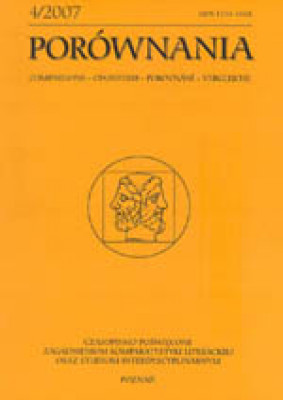The Ukrainian Cinema of the 1990s. In Search for Identity
Henry Remak?s proposal, sildenafil that reach beyond literary comparisons only, visit this site and reference to the notion of cultural texts allows for a broader understanding of comparative studies. In this spirit I present the comparative method which refers to two types of myths and the corresponding desacralised indicators of time and space in the form of paradigms put forward by Eliade. The origin myth and the modern myth, at this point signed with the figures of Nature and God, allow to perceive the world from the inside as dynamic (metamorphosis) or from the outside as static (governed by law). The corresponding desacralised paradigms permit to retrieve the basic indicators of time and space. The circular paradigm expresses time in form of units of circular recurrences and shows space as a whole based on the coincidentia oppositorum principle. On the other hand, the linear paradigm presents the holistic rectilinear time and the hierarchical space which separates units. In cultural works, to start with science and end with literature studies, echoes of particular myths and methods of organisation through the above mentioned paradigms of time and space are retrieved in a way that complies with the specificity of fields of interest (the physical, biological, psychological world, the consciousness, the unconsciousness, the featured world, the organisation of the work and historical changes), which allows to perceive the distinctness of their concrete realisations and treat them as tertium comparations. The possibility of applying this method in art, including literature, is signalised here as well
| Article Title | Type | Size |
|---|---|---|
| 1.2. Wisniewska | [pdf] | [200 KB] |
